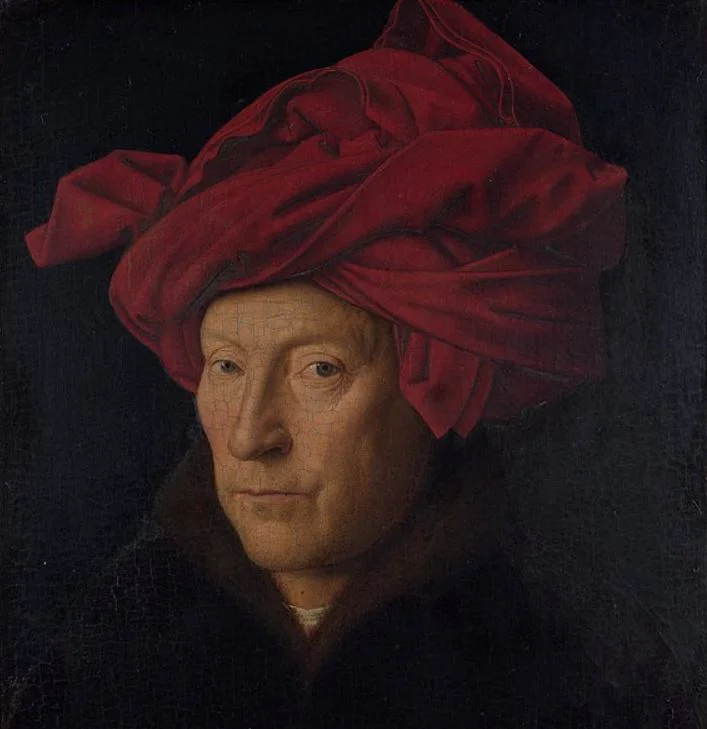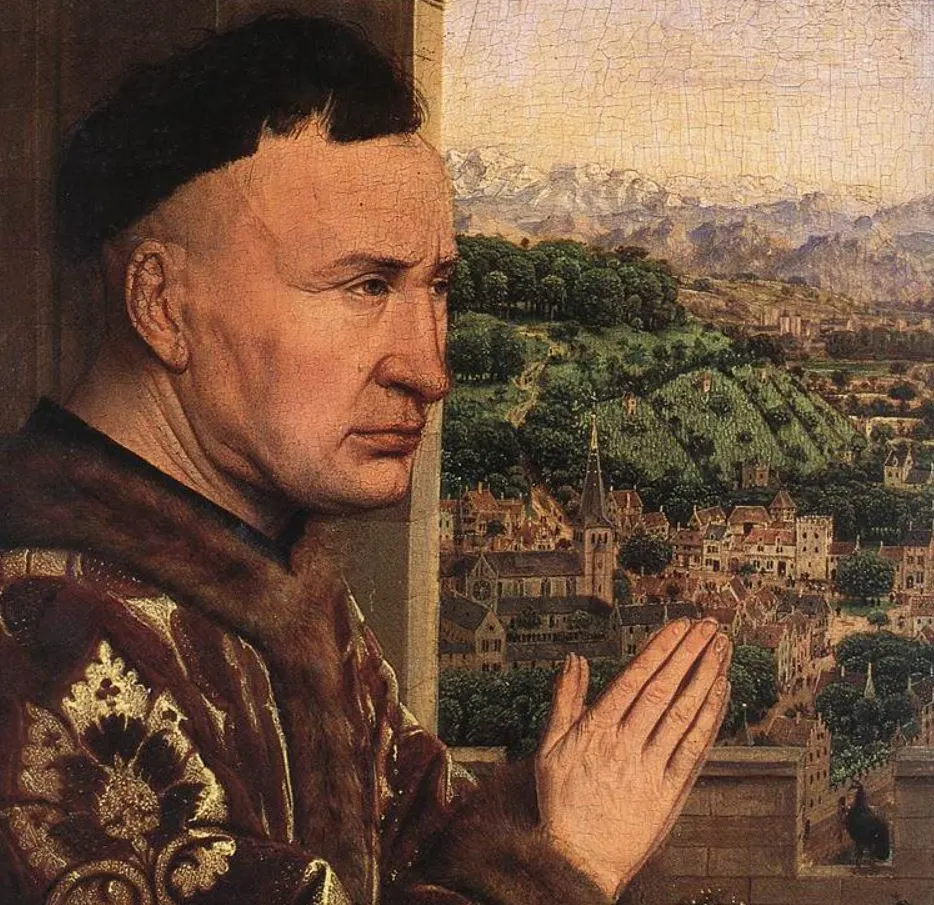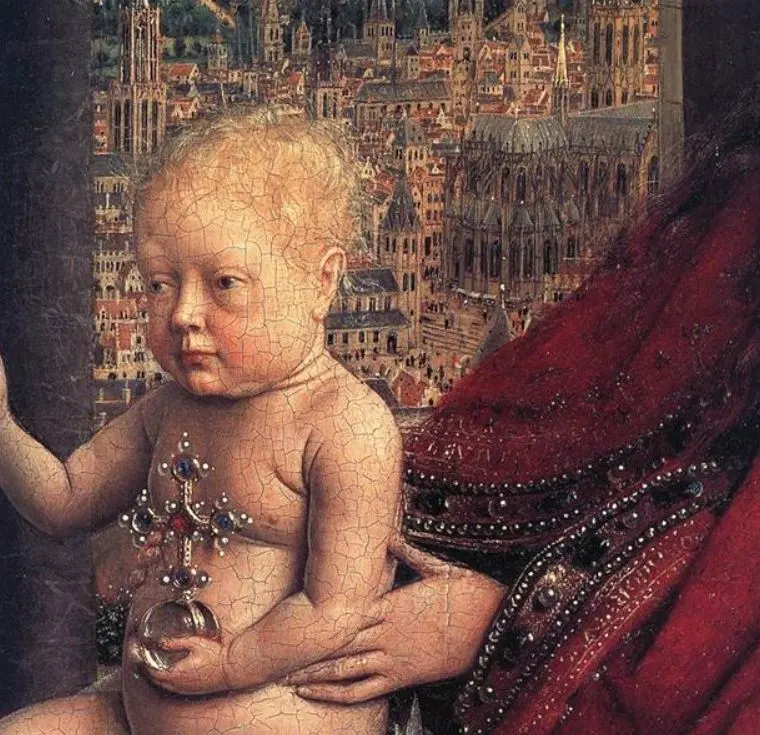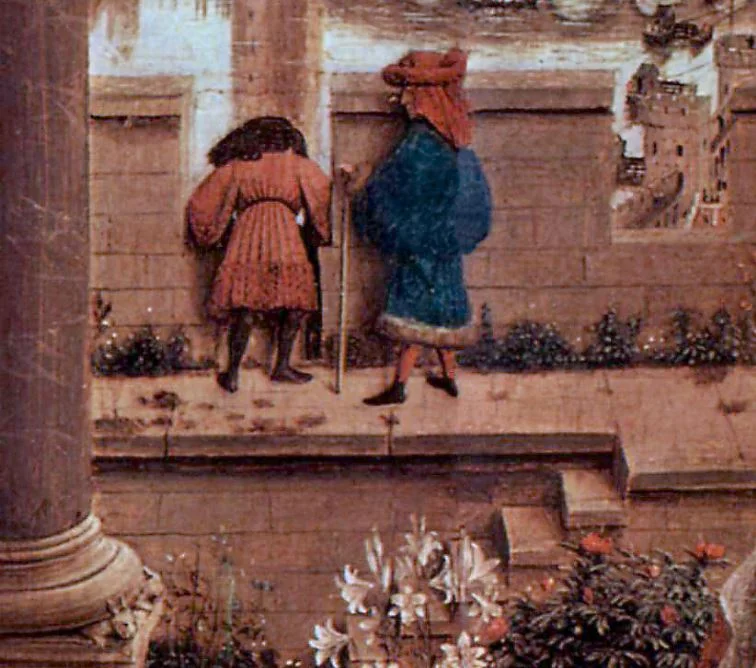One of the most fascinating paintings in the oeuvre of Early Netherlandish painter Jan van Eyck is a work of incredible detail and depicts the man who commissioned it.
In this post, we’ll take a closer look at some of the most interesting facts about the “Madonna of Chancellor Rolin,” one of the ultimate masterpieces of one of the most renowned Renaissance artists in history.
1. The painting was created in the 1430s
Jan van Eyck was born in Maaseik, a town in what is now Flanders in Belgium, in the second half of the 14th century. He can be considered as one of the earliest exponents of the Renaissance in the northern part of Europe.
His most prolific period was in Bruges after he was appointed as the court painter of the Philip the Good in 1425. He was the Duke of Burgundy between 1419 and 1467, the year of his death.
This particular painting dates back to the year 1435, which means it was completed about 6 years before Jan van Eyck passed away.

2. The man who commissioned it is depicted on the left
The Madonna of Chancellor Rolin is the title of this amazing work of art and that’s because Chancellor Nicolas Rolin (1376-1462) is the man depicted on the left side.
He was one of the most important men in Burgundy at the time and eventually became the chancellor to Philip the Good, which is how he was able to commission a painting from the court painter and one of the leading painters at the time.
The man was nearly 60 years old when the painting was completed and it initially hung at the Notre-Dame-du-Chastel in Autun, France, the parish church in the hometown of the chancellor.

3. The view outside presumably depicts the Chancellor’s hometown
One of the most remarkable elements of the painting is the scenery in the background which is extremely detailed. There’s a towering bridge crossing a river, an island in the river, churches, palaces, hills, and fields.

The depicted city is most probably the town of Autun in Burgundy, a city that was originally founded by the first Roman Emperor, Augustus, and which was referred to as Augustodunum. It served as the Roman capital of the Gallic people Aedui and is assumed to have had a population of up to 100,000.
The hills are also extremely steep, much steeper than they are local. In the far distance, there’s also a mountain range covered in clouds, all meant to increase the dramatic effect.

4. Did the Chancellor’s son have something to do with the painting?
What’s remarkable about this painting is that there are two churches depicted, even though there was only one parish church in Autun at the time.
The year following the completion of the painting in 1436, the son of Nicolas Rolin, Jean Rolin (1408-1483), was appointed as the Bishop of Autun.
It’s assumed that the cathedral on the righthand side of the background, right in between the Child and the Virgin, is a reference to this event.

5. Did van Eyck depict himself and his assistant as well?
Just outside the columns of the building, there’s a little garden with a wide variety of flowers, including roses, irises, peonies, and lilies. All of these refer to the virtues of the Virgin.
Just beyond this flower garden, two figures are looking out of the crenellations of what appears to be the walls of a castle or a fortified bridge.
We know that Jan van Eyck depicted himself with a red chaperon before, including in his presumed self-portrait and the “Arnolfini Portrait” in which he appears in the mirror together with his assistant.
This makes it likely that van Eyck and his assistant represent the two figures in the Madonna of Chancellor Rolin as well.

6. Good and evil are represented by two particular birds
The two figures are peaking through one crenellation of this fortified structure. If we look just to the left of them, we can see two birds, a peacock, and a magpie.
These birds represent good and evil, as a peacock represented Jesus Christ in the 15th century, and a magpie was considered to be evil (and still is a sign of bad luck in some countries).

7. The level of detail used makes this an astounding masterpiece
One of the most remarkable facts about the Madonna of Chancellor Rolin is that even though it’s a relatively small painting with dimensions of just 66 x 62 centimeters (2.16 x 2.03 feet), the level of details that van Eyck included is astounding.
This is best reflected in the clothes worn by both the Virgin and Chancellor, as well as the goldwork of the crown just above the Virgin.
Another element that makes this work an incredible masterpiece is the fact that the lighting inside the room comes from 3 sides, both the central portico and the two windows on the side. This incredible use of lighting is perfectly executed by one of the greatest masters of the renaissance.

8. The Virgin and Child portray a particular motif often used in art
The infant Christ sits on the lap of the Virgin in a position referred to as the “Throne of Wisdom.” This was a popular way to depict the Virgin and the Child and was often used by van Eyck and his contemporaries.
It’s assumed that the position of the altar in the parish church of the Chancellor was situated right where the child sits at the lap of the Virgin, creating a remarkable illusion for people inside the church.
The book on the Chancellors lap features a capital “D,” believed to be a reference to “Domine, labia mea aperies” (“Lord open my lips”), which suggests the book is a popular medieval Christian book called the “Book of Hours.”

9. It’s assumed that the 7 deadly sins are depicted
Another incredible level of detail was used by van Eyck in the reliefs carved in the pillars just above the head of Chancellor Rolin. These reliefs are believed to depict 3 of the 7 deadly sins:
- The expulsion of Adam and Eve from Paradise – Representing Pride.
- The Killing of Abel by Cain – Representing Envy.
- The Drunkenness of Noah – Representing Gluttony.
There are more intricate details that possible cover the 4 remaining sins, including:
- Lion heads on tip of the columns – Representing anger.
- Rabbits squashed by the columns inside the portico – Representing lust (that’s what rabbits stood for during the Middle Ages).
The two remaining sins are greed, which was probably represented by a purse full of money worn by Rolin but which has been overpainted, and sloth, which might allude to Rolin himself.
All these sins are located on the left of the painting, the human side, none on the right or the “divine” side.

10. The painting has been at the Louvre since the early 19th century
The painting hung at the Notre-Dame-du-Chastel in Autun, the parish church of the Chancellor, from its completion until this church burned down in the year 1793.
After this event, it was temporarily moved to Autun Cathedral until it entered the collection of the Louvre Museum in Paris in 1805. This masterpiece of Jan van Eyck is still on public display at the largest and arguably most famous museum in the world today!

